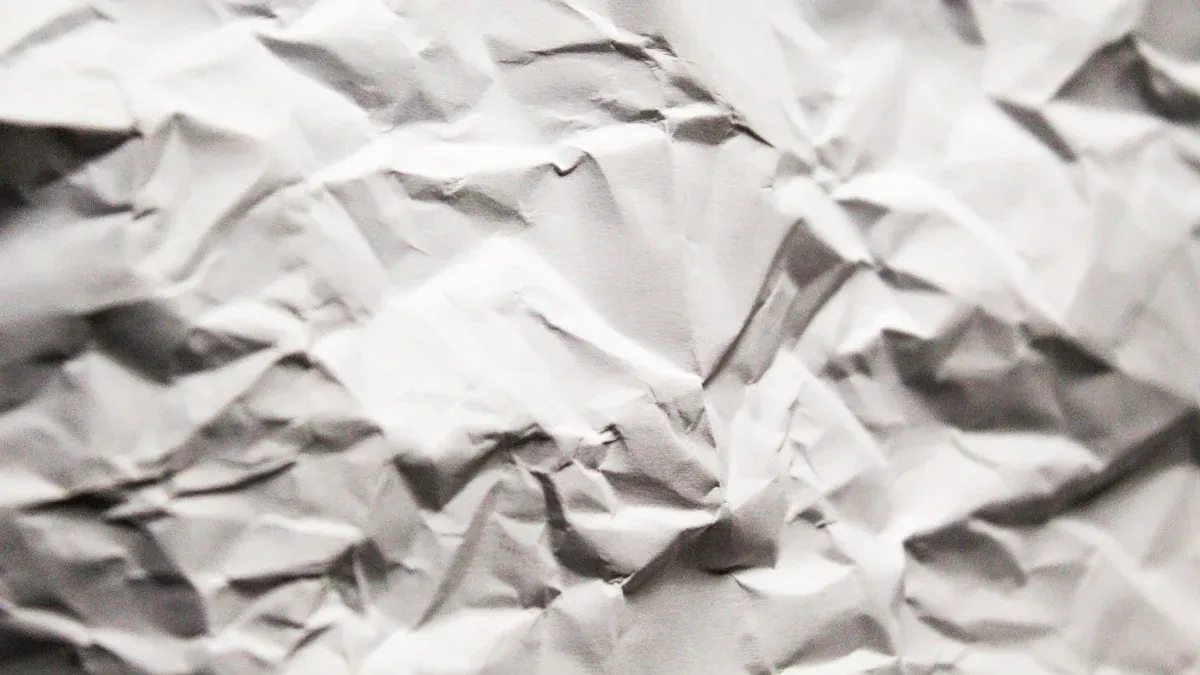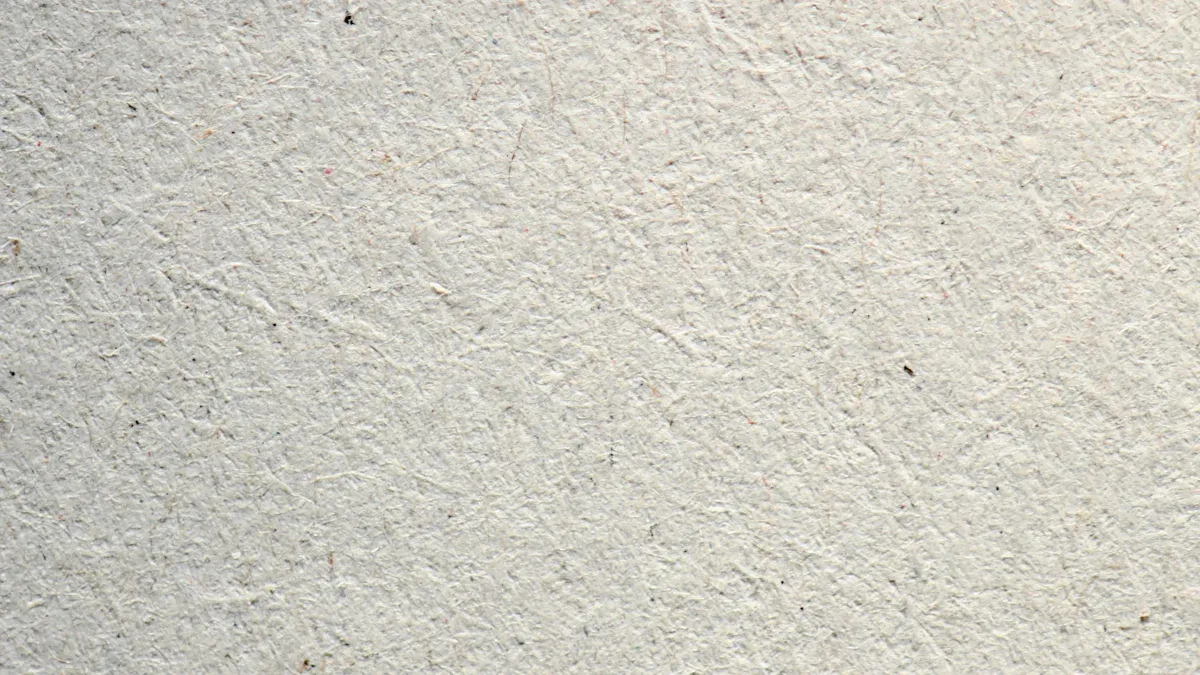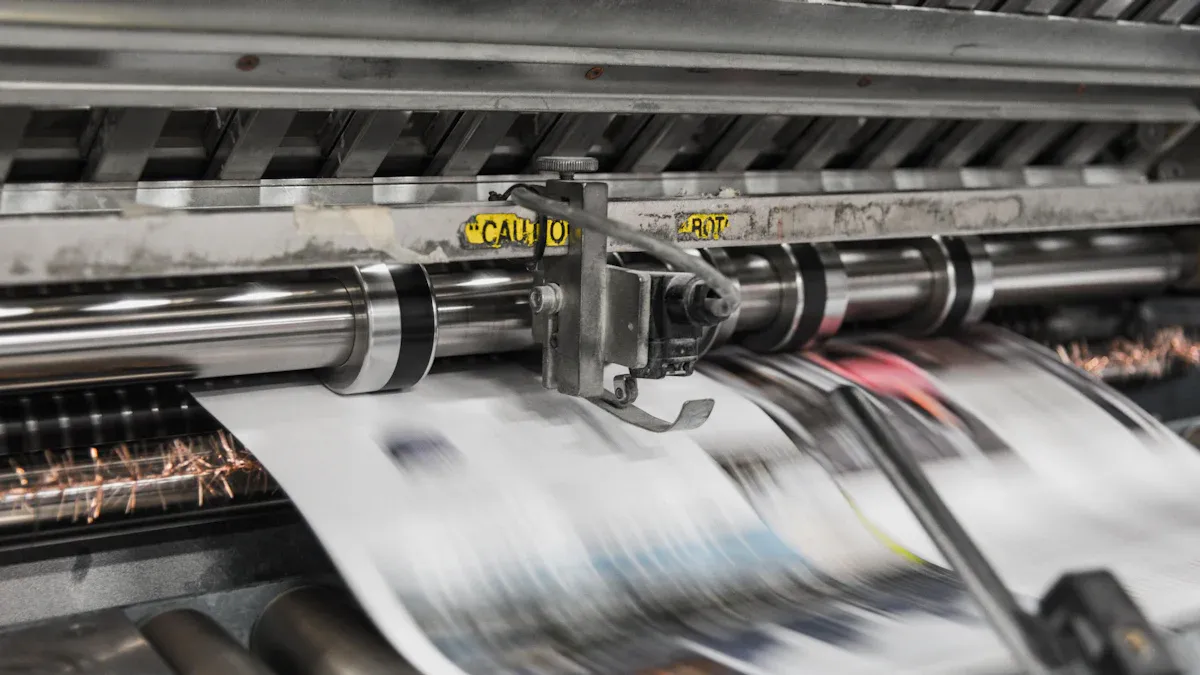
Choosing the right offset paper impacts the final print quality. Evaluating its properties ensures crisp, professional results. Why does quality matter? Let’s break it down:
- Consistent material properties reduce printing errors.
- Measuring tools help track line width for precision.
- Advanced AI detection improves defect identification.
High whiteness offset paper customized size woodfree paper for book printing offers excellent brightness and smoothness. Whether you’re using woodfree offset paper or an uncoated woodfree paper roll, understanding these factors is key to success.
Understanding Offset Paper

What is Offset Paper?
Offset paper is a type of uncoated paper commonly used in printing. It’s designed to handle the demands of offset printing, where ink is transferred from a plate to a rubber blanket and then onto the paper. This paper is versatile and works well for books, magazines, brochures, and more. Its surface is engineered to absorb ink evenly, ensuring sharp and clear images.
Offset paper comes in various weights and finishes, making it suitable for different printing needs. For example, lighter weights are ideal for books, while heavier options work better for posters or high-end brochures. Its durability and ability to hold vibrant colors make it a favorite in the printing industry.
Why Quality Matters in Printing
The quality of offset paper directly affects the final print. High-quality paper ensures that colors appear vibrant and text looks crisp. Poor-quality paper, on the other hand, can lead to smudging, uneven ink absorption, or even curling. These issues can ruin the overall appearance of your printed materials.
For book printing, high whiteness offset paper customized size woodfree paper for book printing is an excellent choice. Its smooth surface and bright finish enhance readability and make images pop. Choosing the right paper not only improves the look of your project but also reflects professionalism and attention to detail.
Tip: Always test a sample of the paper with your printer to ensure it meets your expectations before committing to a large order.
Key Criteria for Evaluating Offset Paper
Weight and Thickness
Weight and thickness are crucial factors when evaluating offset paper. They determine the paper’s durability and suitability for specific printing projects. Heavier paper resists curling and tearing, making it ideal for high-quality prints like brochures or book covers. On the other hand, lighter paper works well for books or flyers where flexibility is essential.
Here’s a quick reference for common paper weights and thicknesses:
| Paper Type | Pounds (lb) | GSM | Points (pt) | Microns |
|---|---|---|---|---|
| Standard Sticky Note | 20# bond | 75-80 | 4-5 | 100-125 |
| Premium Printer Paper | 24# bond | 90 | 5-6 | 125-150 |
| Booklet Pages | 80# or 100# text | 118-148 | 5-8 | 120-180 |
| Brochure | 80# or 100# cover | 216-270 | 8-12 | 200-250 |
| Business Card | 130# cover | 352-400 | 16 | 400 |
When selecting offset paper, consider the type of project and the desired outcome. For example, high whiteness offset paper customized size woodfree paper for book printing often falls within the 80# to 100# range, offering the perfect balance of thickness and flexibility.
Texture and Smoothness
The texture and smoothness of offset paper affect how ink adheres to the surface. Smooth paper ensures even ink distribution, resulting in sharp images and text. Textured paper, while less smooth, can add a unique tactile quality to printed materials.
To evaluate texture and smoothness, professionals use various methods:
- Contact Methods: These involve physical tools to measure surface roughness.
- Non-Contact Methods: These use advanced technologies like lasers to assess the paper’s surface without touching it.
Both methods help determine how well the paper will perform during printing. High whiteness offset paper customized size woodfree paper for book printing typically features a smooth surface, making it an excellent choice for projects requiring crisp, professional results.
Brightness and Whiteness
Brightness and whiteness play a significant role in the visual appeal of printed materials. Brightness refers to how much blue light the paper reflects, while whiteness measures the reflection of all light wavelengths. Higher values in both categories enhance readability and make colors pop.
Here’s a breakdown of brightness and whiteness scales:
| Measurement Type | Scale | Description |
|---|---|---|
| Brightness | 0-100 | Reflectance of blue light (457 nm). Higher values mean brighter paper. |
| Whiteness | 0-100 | Reflectance of all light wavelengths. Higher values indicate whiter paper. |
For book printing, high whiteness offset paper customized size woodfree paper for book printing offers superior brightness and whiteness, ensuring text and images stand out beautifully.
Opacity
Opacity determines how much light passes through the paper. High opacity prevents show-through, which is especially important for double-sided printing or materials with heavy graphics.
For example:
- Low-opacity paper may allow text or images from the reverse side to show through, reducing readability.
- High-opacity paper ensures clean, professional results, even with bold designs.
When evaluating offset paper, always consider the opacity level to match your project’s needs.
Print Performance
Print performance is the ultimate test of offset paper quality. It measures how well the paper handles ink and maintains its integrity during the printing process. Key factors include:
- Ink Absorption: Paper should absorb ink evenly without smudging.
- Curl Resistance: High-quality paper resists curling, even under heavy ink coverage.
- Durability: The paper should withstand the mechanical stress of printing without tearing or warping.
Conducting a print test is the best way to assess performance. Print a sample with your design to check for issues like smudging or uneven ink distribution. High whiteness offset paper customized size woodfree paper for book printing consistently delivers excellent print performance, making it a reliable choice for professional projects.
Practical Testing Methods
Conducting a Print Test
A print test is one of the easiest ways to evaluate offset paper quality. It helps determine how well the paper handles ink and whether it meets the desired printing standards. To perform a print test, users can print a sample design or text on the paper. This allows them to check for issues like smudging, uneven ink absorption, or dull colors.
When conducting the test, it’s important to use the same printer and ink that will be used for the final project. This ensures accurate results. For example, high whiteness offset paper customized size woodfree paper for book printing often delivers sharp, vibrant prints during such tests. Its smooth surface and excellent ink absorption make it a reliable choice for professional printing needs.
Tip: Always examine the printed sample under different lighting conditions. This helps ensure the colors and text look consistent in various environments.
Checking for Curling or Warping
Curling or warping can ruin the appearance of printed materials. These issues often occur when the paper reacts to environmental factors like humidity or uneven ink application. Testing for curling or warping is crucial, especially for projects requiring precise alignment, such as book printing.
Researchers have observed that offset paper can curl due to differential swelling of its cellulose fibers. For instance:
- A study used A4 printer paper sprayed with a water-glycerol mixture.
- The paper curled over a week as glycerol migrated from the printed side to the unprinted side.
- Layers near the sprayed side shrank, while deeper layers swelled, causing the curling effect.
To test for curling, users can print a sample and leave it in a controlled environment for a few days. Observing any changes in the paper’s shape will reveal its stability. High whiteness offset paper customized size woodfree paper for book printing often resists curling, making it ideal for projects requiring durability and precision.
Comparing Multiple Samples
Comparing multiple paper samples is a smart way to find the best option for a project. By evaluating different samples side by side, users can identify subtle differences in weight, texture, brightness, and print performance.
Here’s how to compare samples effectively:
- Print the Same Design: Use the same design on all samples to ensure a fair comparison.
- Check for Consistency: Look for uniform ink absorption and color vibrancy.
- Evaluate Feel: Touch the paper to assess its texture and smoothness.
- Test for Opacity: Hold the paper up to the light to check for show-through.
This method helps users make informed decisions. For instance, high whiteness offset paper customized size woodfree paper for book printing often stands out in such comparisons due to its superior brightness and smooth finish.
Note: Keep detailed notes during the comparison process. This makes it easier to remember which sample performed best.
High Whiteness Offset Paper Customized Size Woodfree Paper for Book Printing

Features of High Whiteness Offset Paper
High whiteness offset paper stands out due to its exceptional technical specifications. Its smooth surface and consistent quality make it a top choice for professional printing. This paper is available in various grammages, including 60g/m², 70g/m², and 80g/m², all of which meet Grade A standards.
Here’s a closer look at its key properties:
| Property | Unit | 60g/m² | 70g/m² | 80g/m² |
|---|---|---|---|---|
| Grade | Grade A | Grade A | Grade A | |
| Grammage | g/m² | 60±3% | 70±3% | 80±3% |
| Caliper | µm | 68±4% | 68±4% | 68±4% |
| Whiteness | % | 98±1 | 98±1 | 98±1 |
| Tensile Strength MD | KGF/15mm | ≥2.0 | ≥2.5 | ≥3.0 |
| Bendtsen Smoothness | s | ≥40 | ≥40 | ≥40 |
| COBB 60s | g/m² | ≤40 | ≤40 | ≤40 |
| Moisture | % | 6.0±1.0 | 6.0±1.0 | 6.0±1.0 |
This paper’s high whiteness (98±1%) ensures vibrant colors and sharp text. Its tensile strength and smoothness make it durable and ideal for high-speed printing. Additionally, its moisture content and COBB value help maintain stability during printing, reducing issues like curling or warping.
Benefits for Book Printing Applications
High whiteness offset paper customized size woodfree paper for book printing offers numerous advantages for book publishers and printers. Its bright white surface enhances readability, making text and images stand out. This feature is especially important for books with detailed illustrations or photographs.
The paper’s smooth texture ensures even ink absorption, resulting in crisp and professional-looking prints. Its durability allows it to withstand the demands of binding and frequent handling, making it perfect for books that need to last.
Another benefit is its versatility. Whether printing novels, textbooks, or coffee table books, this paper adapts to various printing needs. Its consistent quality ensures that every page looks flawless, reflecting the professionalism of the publisher.
Tip: For the best results, pair this paper with high-quality ink and printing equipment. This combination guarantees stunning visuals and long-lasting prints.
Common Mistakes to Avoid
Even experienced professionals can make mistakes when evaluating offset paper. Avoiding these common pitfalls ensures better results for your printing projects.
Overlooking Opacity
Opacity often gets overlooked, but it’s a critical factor for high-quality printing. Low-opacity paper can ruin double-sided prints by allowing text or images to show through from the other side. This reduces readability and makes the final product look unprofessional.
To avoid this mistake, always check the paper’s opacity rating. Hold a sample up to the light and see if anything shows through. For projects like books or brochures, high-opacity paper ensures clean, crisp results.
Tip: High whiteness offset paper customized size woodfree paper for book printing offers excellent opacity, making it a reliable choice for double-sided printing.
Ignoring Print Performance Testing
Skipping print performance testing is another common error. Without testing, you might end up with paper that smudges, curls, or absorbs ink unevenly. These issues can waste time and money.
Always test a small batch before committing to a large order. Print a sample design and check for smudging, color vibrancy, and ink absorption. This step ensures the paper meets your expectations and performs well with your printer.
Failing to Compare Samples
Choosing the first paper you find without comparing samples can lead to disappointment. Subtle differences in texture, brightness, or weight can significantly impact the final product.
Request samples from multiple suppliers and evaluate them side by side. Look for consistency in ink absorption, smoothness, and overall quality. Taking the time to compare ensures you select the best paper for your project.
Note: Comparing samples helps you identify the perfect balance of quality and cost for your needs.
Evaluating offset paper quality ensures professional printing results. Key steps include checking weight, texture, brightness, opacity, and print performance. These factors directly impact the final product.
Pro Tip: Always test samples before committing to a large order. Applying these tips guarantees crisp, vibrant prints that leave a lasting impression.
FAQ
What is the difference between brightness and whiteness in offset paper?
Brightness measures how much blue light the paper reflects, while whiteness evaluates the reflection of all light wavelengths. Both affect the paper’s visual appeal.
How can I test offset paper before purchasing?
Print a sample design using the same printer and ink intended for the project. Check for smudging, ink absorption, and overall print quality under different lighting conditions.
Why is opacity important for book printing?
Opacity prevents text or images from showing through the other side of the page. High-opacity paper ensures clean, professional results, especially for double-sided printing.
Tip: Always request samples from suppliers to compare opacity, texture, and print performance before making a decision.
Post time: Jun-12-2025
